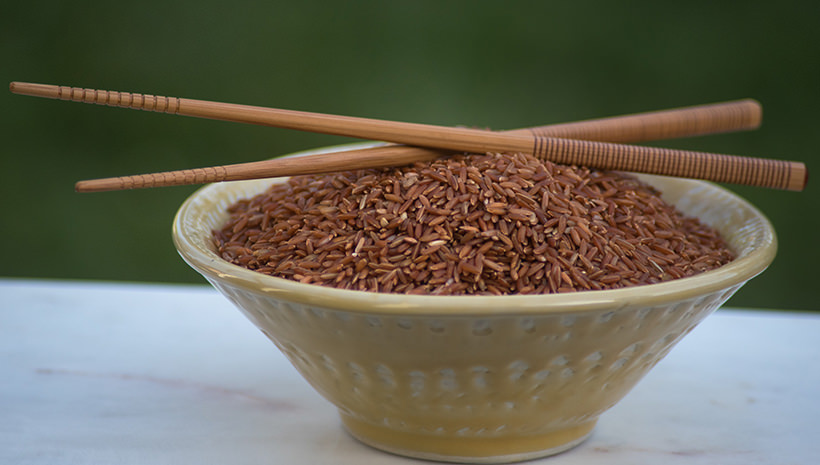
The 411 of Rice
Color, texture, flavor, and region are only a few of the distinguishing characteristics of rice – one of the world’s most popular grains. Rice is important for human nutrition. It provides one-fifth of the calories consumed worldwide by humans and is a staple food in many parts of the world—especially throughout Asia and India.
It’s use and benefits are described in Asian systems of medicine such as Chinese Medicine and Ayurveda. Rice is the seed found in the grass species Oryza sativa; it is classified as the cereal grain with the second-highest worldwide production after maize (corn).
While white rice used to be the standard-bearer in a typical American grocery, a growing interest in global cuisine had led to an increased availability of types of rice that were once harder to find or even forbidden (literally).
Not all rice is created equal. Learning a bit more about rice can upgrade our meal-planning options and help us to appreciate the healing properties of this staple food.
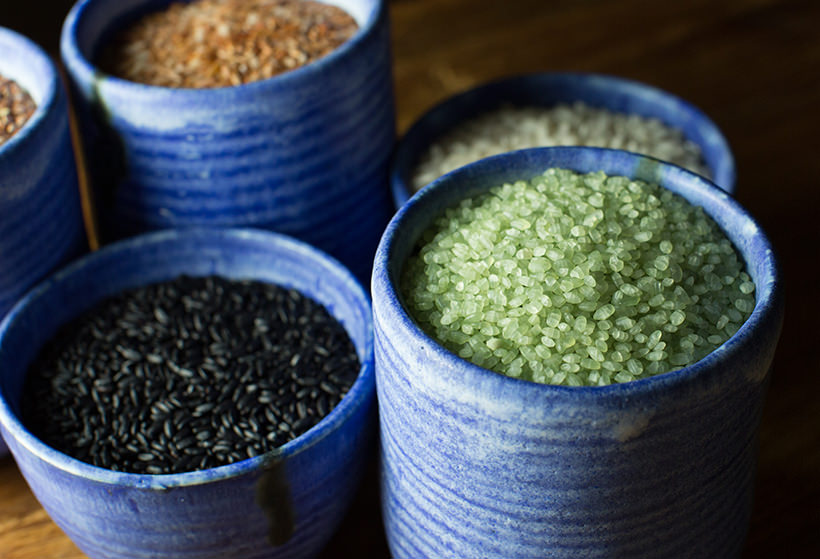
The History of Rice
This grain has been part of human history for so long that there is controversy and debate about where, when, and who first cultivated rice in the world. In 2011, the Stanford, New York, Washington, and Purdue Universities came to the conclusion that rice was first domesticated in the Yangtze River Valley in China around 12,000 years ago; cultivation then spread to South Asia, then to Europe, and finally to the Americas.
In today’s world, 92% of all rice comes from Asian countries—including China, India, Indonesia, Pakistan, Bangladesh, Vietnam, Thailand, Philippines, and Japan. According to the International Rice Association, there are more than 40,000 varieties of Oryza sativa currently being produced in the world and more than 90,000 samples of cultivated and wild rice species stored at the International Rice GeneBank in the Philippines, which are used for research.
Growing Rice
The majority of rices are grown as annuals (completes its life cycle from germination to the production of seed within one year), although in some tropical areas it can survive as a perennial (lives for more than two years). Oryza sativa, commonly known as Asian rice, is well-suited to countries and regions with low labor costs and high rainfall, as it is both labor-intensive to cultivate and requires ample water.
Rice can be grown practically anywhere, even on a steep hill or mountain, with the use of water controlling terrace systems. Before rice can be planted, the soil surface must be level (so terraces are built on hillsides)— preparation involves plowing and harrowing, which is known as “tilling.” Tilling allows the seeds to be planted at the right depth and helps with weed control.
Rice is planted by either transplanting or direct seeding. Transplanting is the most common technique, where pre-germinated seedlings are transferred from a seedbed to the wet field; this requires fewer seeds but is more labor intensive. Direct seeding involves planting dry or pre-germinated seeds on the soil surface by hand or by machine, and then incorporating, either by plowing or by harrowing, while the soil is still dry.
Cultivating rice is extremely sensitive to water shortages, so most rice farmers aim to maintain flooded conditions in their fields. Nutrient management is considered fairly easy because flooding conserves the soil’s organic matter, so little or no fertilizer is required. Most rice crops reach maturity at around 125 days, and harvesting is done manually with a sickle or mechanically.
Growing Rice with Less Water
An innovation in rice growing is System of Rice Intensification (SRI). It was developed in Madagascar in the 1980s and based on changing the management of rice agriculture increasing overall efficiency and using less water. This rice cultivation method allows farmers to dramatically increase yields with less seed, less water, less chemicals, and less waste.
The SRI International Network and Resources Center is managed by Cornell University College of Agriculture and Life Sciences. Lotus Foods is committed to SRI; six of their rices are grown using these techniques. Lotus Foods labels them “More Crops Per Drop” to highlight this.
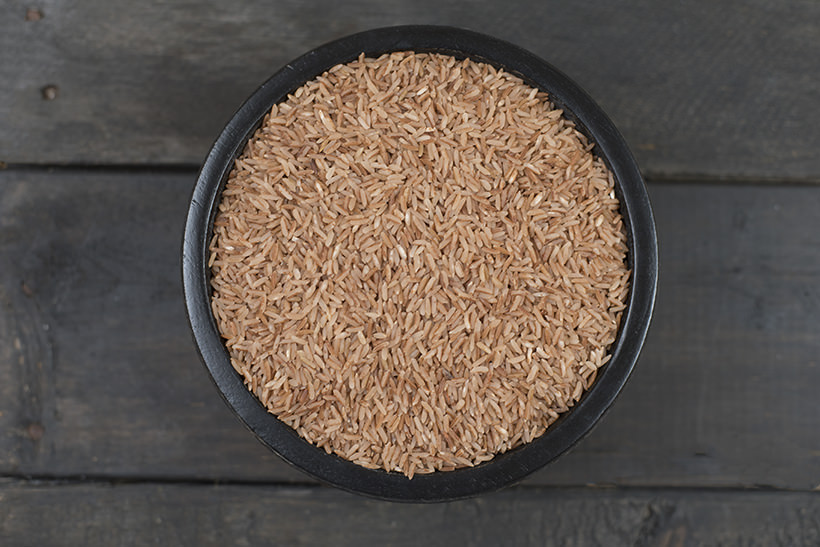
Understanding Rice Anatomy
Hull – Each grain of rice is enclosed in a tough outer hull, or husk, which must be removed before the grain can be consumed.
Bran – Under the hull is the bran layer, which is brown, tan, golden, black, purple, or red depending on the pigmentation of the rice. The bran layer makes the rice more nutritious but also more difficult to digest and requires longer cooking.
Rice – Once the bran is removed, the white rice remains. Known as the endosperm, this is the part of the rice that is most commonly consumed and the most easily digested.
Germ – The germ, found under the bran, is responsible for the grain’s germination and contains the majority of rice’s nutrients—including protein, minerals, and vitamins.
The Many Uses of Rice
- Rice is a staple food used by 60% of the world’s population.
- Rice starch is used in making ice cream, custard powder, and puddings.
- Bran oil is used as edible oil, as well as in soaps, cosmetics, emulsifiers, and detergents.
- Rice bran is used in confectionery products, cattle feed, organic fertilizer, and composting.
- Flaked rice is made from parboiled rice, flattened, and used in cooking.
- Puffed rice is a puffed form of the seed (the paddy) used in cooking.
- Parched rice is made from parboiled rice, steamed and more easily digested.
- Rice husks are used as fuel, and in paper manufacturing and building materials.
- Broken rice is used to make rice flour, noodles, rice cakes, and poultry feed.
- Rice straw is used as animal feed, fuel, bedding for mushroom production, and composting.
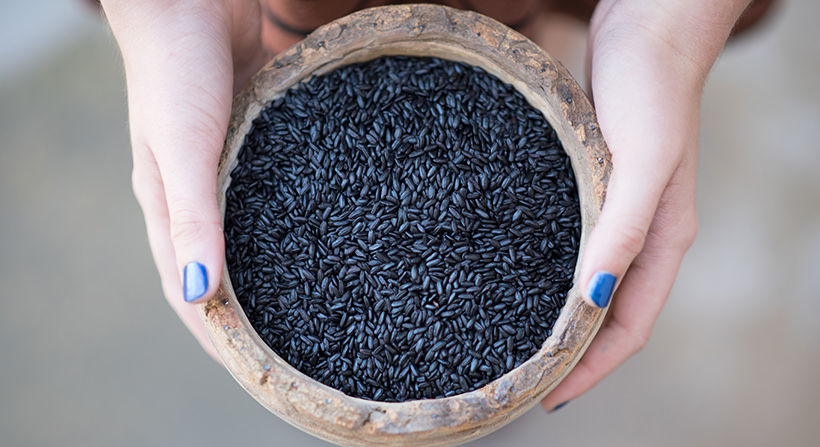
Types of Rice
Rice is officially known by its botanical and/or Latin name. It is then categorized and further broken down by its size, country of origin and ethnicity, color, aroma, type or specialty, consistency, or any special processing it has gone through.
Rice categorized by processing methods
Parboiled rice is not precooked, but instead, once the hull is removed, the whole grain (brown rice) is soaked, steamed, and dried, which enriches its nutrients. Once the bran is removed it has a more golden color with a harder outer surface, but requires additional cooking.
Converted rice is a type of parboiled rice that has been further pre-cooked, allowing faster cooking times.
Enriched parboiled rice is similar to converted rice, but additional nutrients are added to enrich its bioavailability for the body.
Quick-cook rice, also called easy-cook rice, is medium or short-grained rice that is partially cooked after milling and then dried, which reduces its cooking time by about half that of ordinary long-grain rice. Quick-cook rice loses many of its nutrients in this process and is often fortified.
Brown and White Rice: Husk or No Husk
Brown rice has its outer husk removed while the the bran and germ layers are retained, giving it a characteristic tan color. Although brown rice takes a little longer to cook, its nutrient-dense layers are rich in vitamins and minerals.
Enriched white rice is enriched with thiamin, niacin, foliates, and iron which replace the nutrients that are lost when the bran is removed.
Instant white rice has been milled and polished, then fully cooked and dehydrated, which bring its cooking time to around few minutes. This rice is sometimes enriched with nutrients.
Polished rice refers to white rice that has been milled—removing its husk, bran, and germ and then polished mechanically, resulting in a brighter, shiny appearance.
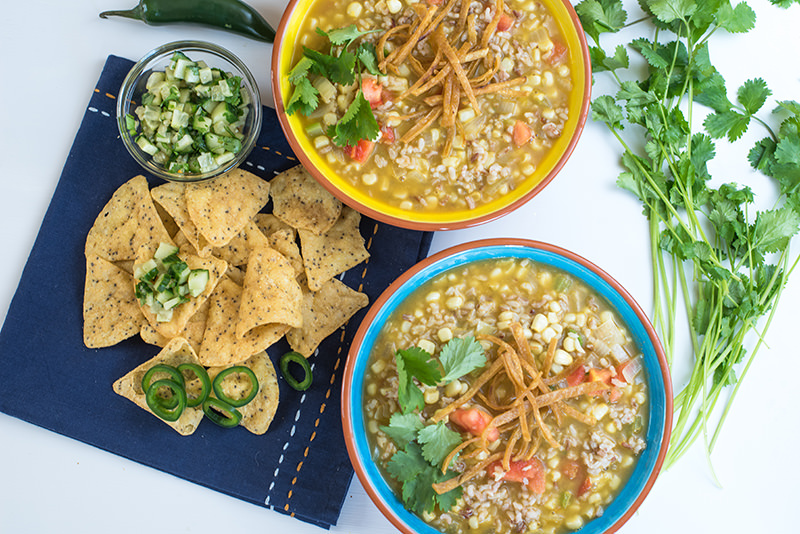
Rice Categories, Varieties, and Regions
Long, Medium, and Short Grain
Rice is classified as having long, medium, or short grains based on their ratios of length to width when cooked. As you might imagine, long and thin rice is defined as long grain (like long-grain basmati). Short-grain rice varieties tend to be more plump (think sushi rice). And medium-grain is in the middle. When we consider the types that fall into the various categories, they tend to be on a bit of a continuum.
Rice Varieties
Aromatic rice contains a natural ingredient called 2-acetyl 1-pyroline, which gives it its characteristic nutty fragrance, aroma, and flavor. Medium and long-grain aromatic varieties include basmati, jasmine, Bhutanese red, and wild rice.
Basmati rice is a type of aromatic rice. In Hindi “basmati” literally means “fragrant.” It is long and slender in size and most often comes as white rice from India and Pakistan. In its wholegrain form (brown) it is lighter and quicker to cook than other brown rices. Kalijira (baby basmati) comes from Bangladesh and requires a shorter cooking time.
Jasmine rice is an aromatic rice that gets its name from its white color—which is associated with the jasmine flower. It is grown primarily in Thailand, Cambodia, and Vietnam. Jasmine rice has a moist and soft texture, sweet flavor, can become sticky when cooked, and can be found in white and brown.
Black rice, also known as “Forbidden Rice” or “Purple Rice,” gets its color from its anthocyanin content. Anthocyanins are water-soluble phytonutrients with dark pigments that have anti-oxidant, anti-inflammatory, and anti-microbial properties. It is cultivated in China, Thailand, and Indonesia.
Red rice is similar to black rice, with a nutty flavor but a red outer skin. It has a creamy and chewy consistency and is cultivated in France, North America, and Bhutan.
Japonica rice is categorized into two varieties. On is Sinica, a shorter, thicker, and stickier version cultivated in Korea, Japan, and Northern China. The second is Indicia, which comes from other regions in Asia and is less starchy, longer, thinner, and fluffier. It is also cultivated in California and is found in black, brown, and red.
Spanish rice (Paella, Bomba, and Sollana) is traditionally from the Spanish region of Valencia, where it was first cultivated. It is a medium or short-grain rice similar to the types of used to make risotto, but it generally contains less starch. Spanish rice is used in Paella.
Arborio rice is Italian short-grain rice, named after the town of Arborio in the Po Valley in Italy. During cooking it absorbs up to five times its weight in liquid and becomes naturally creamy and chewy due to its higher starch content. This is one of the rice varieties (although not the only one) used to make risotto.
Sushi rice is a Japanese specialty short-grain, white rice that is sticky and slightly sweet. It is usually soaked and then cooked. Once cooled, it is typically flavored with sweetened rice vinegar before being wrapped in rolls or shaped into sushi.
Glutinous rice is referred to as sticky, sweet, or waxy rice and is mainly cultivated in Southeast Asia. The name is confusing because it contains NO gluten; its grains are round and chalky-white and are available in white, brown, and black.
Sticky rice is also known as sweet rice and is grown mainly in Southeast Asia. This rice is predominantly used for producing rice flour, and when cooked is very sticky.
American specialty rices are grown regionally in the USA and are hybrids of traditional international rices. Found in Texas, California, and the Gulf River Valley, they are sold under trade names. Names include Red Christmas and Wehani from California, Jasmati and Kasmati from Northern Wisconsin, and Texmati from Texas.
Wild rice is grown in North America and China. It has a chewy outer sheath with a tender inner grain and unique exotic aroma. The species native to North America comes from the Great Lakes Region, Sacramento River Valley, Gulf Coast, and Central Texas. China produces a species known as Manchurian. Wild rice (Oryza zizania) is a different species than other forms of rice (Oryza sativa).

Benefits of Rice
Rice is an amazingly low-cost and easily prepared food that provides quick energy due to its abundant carbohydrates. Because it is rich in nutrients, it contains the foundation for overall metabolism, strong immunity, and the general health and function of the organs.
Rice contains neither harmful fats nor cholesterol. Since it is also naturally low in sodium, this means that rice is considered to be a “cardio protective” food. It generally does not increase high blood pressure or hypertension. Categorized as a resistant starch, it partially bypasses the digestive system, and increases fiber in the bowels. This is significant for improving elimination and reducing constipation, diarrhea, and conditions such as IBS.
Brown rice has a lower glycemic index (the measurement used to determine the effect of sugar on blood glucose levels) than white rice, even lowering glucose levels, benefiting conditions like diabetes. According to a study published in the Journal of Pharmacognosy and Phytochemistry, brown rice’s higher fiber and natural antioxidants scour the body for free radicals. This anti-oxidant effect has been shown to reduce cancerous cells, and stimulate the activity of brain neurotransmitters, which can help prevent degenerative diseases like Alzheimer’s.
Ayurveda and Rice
In Ayurveda, powdered rice has been used for centuries to reduce inflammatory conditions internally and externally. It is either ingested as rice water or applied topically for skin conditions.
The classic Ayurvedic recipe kitchari (mung beans and rice) is only one of the medicinal recipes that contain rice. According to Ayurveda, rice predominantly contains the sweet taste. This means that overall it is grounding and it also has a tendency to be cooling and nourishing. It reduces the doshas vata (air and space) and pitta (fire).
While some sources say that it can be balancing to all of the three doshas (vata, pitta and kapha—earth and water), in excess it can have the effect of increasing kapha. One remedy for this is to eat less rice, or even to dry roast it before cooking. The most common variety of rice recommended in Ayurveda is basmati.
The vast array of rice varieties and recipes available offer ample opportunities for creativity. Try a new color or flavor of grain. Experiment. Trade recipes with friends. A rice-based side or main dish connects you to cuisines and traditions around the globe. At home in your kitchen or with friends and family, you can traverse the world on your dinner table.
Jeff Perlman is a Clinical Ayurvedic & Pancha Karma Specialist, Certified Iyengar Yoga Instructor, Certified Massage and Marma Therapist, a professional member of the National Ayurvedic Medical Association and a Cordon Bleu Chef. He is available for private consultations. He leads annual trips to India. You can contact him at jeff@tsayurveda.com or visit his website: threeseasonsayurveda.com
